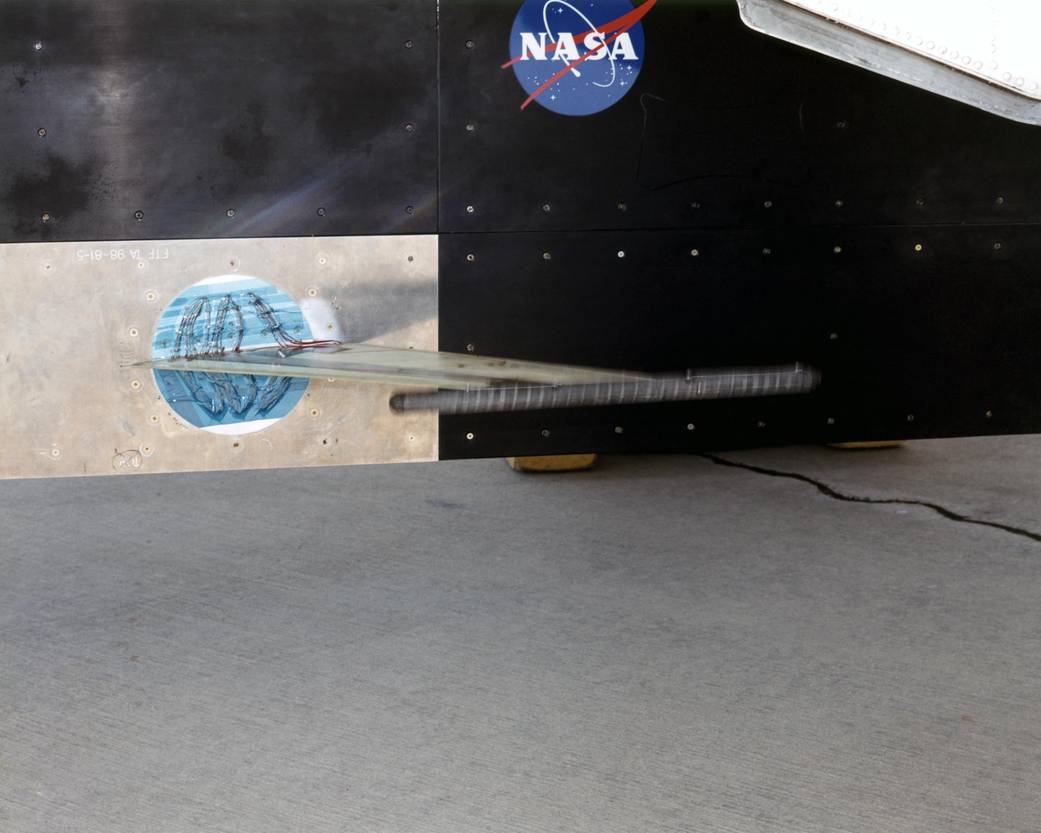EC01-0086-8
A flight experiment called the Aerostructures Test Wing (ATW) conducted at NASA’s Dryden Flight Research Center, Edwards, CA, successfully demonstrated a new software data analysis tool, the flutterometer, which is designed to increase the efficiency of flight flutter testing. The photo shows the experiment, which consisted of an 18-inch carbon fiber test wing with surface-mounted piezoelectric strain actuators, undergoing ground testing prior to flight. The test wing was mounted on a special ventral flight test fixture and flown on Dryden’s F-15B Research Testbed aircraft.
Five flights consisted of increasing speeds and altitudes leading to the final test point of Mach .85 at an altitude of 10,000 feet. At each Mach and altitude, stability estimations of the wing were made using accelerometer measurements in response to the piezoelectric actuator excitation. The test wing was intentionally flown to the point of structural failure, resulting in about a third of the 18-inch wing breaking off. This allowed engineers to record the effectiveness of the flutterometer over the entire regime of flutter testing, up to and including structural failure.
Research objectives of the ATW experiment included validation of the new flutterometer, validation of aerodynamic load predictions on the test wing, and analytical strain gage calibration techniques.
March 28, 2001NASA Photo / Tony Landis› F-15B Project Description




























